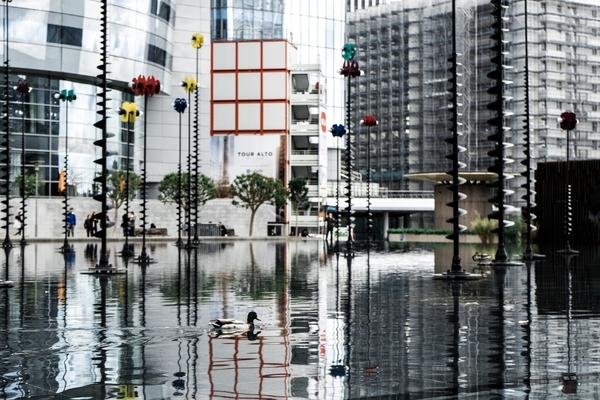
Building for the ‘New Normal’ of Extreme Weather
But beyond industry standards to make buildings more sustainable and reduce their carbon footprints in both construction and maintenance, architects, city planners, and engineers have had to keep our changing climate in mind in design and renovations.
Hurricane Sandy, in particular, was a big wake-up call.
“We’ve seen lots of different climatic events throughout the United States before, but very few have hit a huge metropolitan area like [Sandy] did New York City,” said Jon Penndorf, project manager and sustainability leader at architecture firm Perkins and Wills. “I think that was the beginning of the wake-up call…It’s not enough just to talk about energy and water conservation. It’s also about flexibility, adaptability, and the ability of a structure to weather a crisis event."
Check out seven building prepared for – and fighting against – climate change >>
Most commonly referred to by the industry as “resilience,” the concept gives a framework to confront complex challenges we face today with the climate crisis and inequity.
“[Resilience] is about elasticity, an innate quality of adaptability, and the connection to architecture is twofold. First, resilience means designing adaptable structures that can ‘learn’ from their environments and sustain life, even in the face of disaster. Second, resilience means architects can learn from their buildings and deploy evermore-refined designs. Third, resilience means involving people directly in the design and creation of strong and inclusive cities.” (Architecture Magazine)
These designs often work with the changing environment, rather than against it.
For example, a climate resilience strategy for waterfront buildings known to flood during storms would incorporate that risk into the design – creating barriers to stop ground floor flooding when possible, but also moving major equipment to upper floors.
Miami’s Brickell City Centre complex took the changing climate into consideration by building the space higher than the current flood plain, adding in flood gates and an elevated seawall. The city also started to require all new properties build their first floor higher to mitigate future flood damage from both storms and rising sea levels.
And it’s not just in new construction. Also in Miami, the city is raising sea walls, sidewalks, and roads. The Rebuild by Design program is leveraging the skills of architects and planners to strengthen the coastlines of Connecticut, New York, and New Jersey in the wake of Hurricane Sandy. And a similar initiative, Resilient by Design, is underway in the San Francisco Bay area.
Smart, resilient design also addresses shelter-in-place realities of from major weather events like hurricanes, blizzards, and heat waves.
At Climate Reality, we talk quite a bit about how lower-income and marginalized communities are more likely to experience the health and economic harms from extreme weather events exacerbated by our rapidly changing climate because of social inequities like redlining, inequitable distribution of aid after disasters, and more.
It’s clear that resilience is and must be considered a matter of justice – and communities must have the agency to identify priorities for their neighborhoods and be actively engaged in the solutions.
Resilience and adaptation strategies in building our homes, structures, and communities is a pragmatic recognition that the climate crisis is indeed here, and that we have to make changes – we can’t keep doing things the way we’ve always done them.
KEY TAKEAWAYS
- Climate change is impacting design choices made by architects, city planners, and engineers.
- Climate resilience strategies consider working with the changing environment, rather than against it.
- Climate change disproportionally impacts lower-income communities and resilience must be considered in affordable housing.
WHAT YOU CAN DO
It’s clear that we need to consider our changing climate if we want to build sustainable buildings and communities for the future.
Across the country, everyday Americans are joining Climate Reality chapters and working together for practical climate solutions. These friends, neighbors, and colleagues are bringing clean energy to their towns, fighting fracking developments, and so much more. They’re making a real difference for our climate, and you can too.
If you’re ready to take action in and for your community, then we invite you to join a Climate Reality chapter. Learn more and join today!

